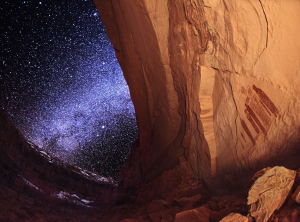From time to time I encounter people online who are enamoured of quantum physics in a dilettante sense, obsessed with the implications upon macroscopic reality, and the broader philosophical questions about what is real anyway. I’ve come to think of their arguments as “cargo cult physics” because in a way, they simply snowball the debate with terminology, quote papers, etc and basically obfuscate beyond the capability of anyone to really follow what they are saying.
Here’s an example from a particularly painful (for this, and other reasons) thread at Talk Islam.
aziz 3:03 pm on January 26, 2011 Permalink | Edit
Keid, you take the extremist position that there is no reality – and then you insist that reality is only empirical. There’s a fundamental tension that not even Godel can save you from here.
I welcome your intellectual pity, and i reciprocate.
THE 6:56 pm on January 26, 2011 Permalink | Edit
OK deconstruct. I am not saying there is no reality. (How could I possibly know that?). I am saying reality is for us a theory.
Now it’s very possible that it is a true theory. It certainly agrees with all the empirical evidence, in the information flows we have access to, that there is an external causal reality. That external stuff also seems to form our physical substrate.
But we try to make theories now about the nature of that external & substrate-level reality. We start to understand that although it obeys rules that seemed to be mechanical when we first started to study it, the deeper we go into the structure, the more it becomes abstract and information-like.
Particles become quanta become qubit states in a information-bearing field?
Also very important this: The whole notion of a continuous space with continuous fields, breaks down as you get to the Planckian level, 10^-35 meters. So we need a new paradigm.
So now we postulate: Is there a supportive subPlanckian substrate to the entire world? Presumably it could be even more information-like, more abstract. Could it be pure information?
How could this work?
Well there are clues. Number one IMHO is the holographic conjecture. We can reinterpret the quantum fields that make up the universe as a isomorphic to fields in an outgoing 2 dimensional surface at the edge of the universe. The area of that surface has to be quantized into planck-sized areas. Could it be a cellular lattice of some kind? In some, as yet unknown, geometry?
Then the information could be qubits being exchanged between cells in that geometry.
Understand that lattices can arise naturally, e.g Crystals. Geometry just has to have the right symmetry, thats all, to form repeating cells capable of computation.
I know this is vague and impressionistic, but I’m not a real physicist and I’m out of my depth here.
As you can imagine, I’m paying a lot of attention to current attempts to confirm Hogan’s noise.
THE 8:12 pm on January 26, 2011 Permalink | Edit
I found Paola Zizzi’s paper thought provoking.
How to respond to this? Well of course, reality is a theory. But it’s a damn good one. The entire point of theory is to approximate reality in a useful way. Invoking crystals and quantum cubits and whatnot is just adding noise. Unlike Hogan’s noise, this noise is well confirmed.
Anyway I am not trying to pick on my interlocutor here, just frustrated with the way these sorts of debates turn out. Basically it’s all a condescending attempt to wave big words around at me to intimidate me because I have spiritual faith. Pointing out I have a PhD in physics is kind of pointless here. I believe in God, so I must be an idiot on some fundamental way, and here’s the proof: [insert gibberish].
You see the same sort of thing with people who believe in Singularity – but I’m a Singularity skeptic.
